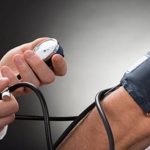
Can you literally step away from depression? A new global review of data found that “increasing the number of daily steps, even at modest levels, was associated with a reduction in depressive symptoms.” The Spanish study found that up to a level of about 10,000 steps per day, the odds for depression decline as daily step levels rise. The findings were published Dec. 16 in the journal JAMA Network Open. Researchers led by Estela Jimenez-Lopez, of the University of Castile-La Mancha, noted there’s already solid evidence that exercise of any kind is a natural antidepressant. But what about something as easy as walking? To find out, they looked at data from high-quality studies on daily step counts and their links to mental health. In total, the new review covered 33 studies involving a total of more than 96,000 adults worldwide. Studies included people who used fitness-tracker devices to calculate their daily steps. Compared to a baseline of 5,000 steps taken per day, folks who took even 1,000 more steps daily saw a 9% drop in their odds for developing depression, the researchers found. Those benefits quickly mounted up: Compared to folks walking 5,000 steps per day or less, those who walked 7,000 steps/day had a 31% lower odds for depression, the study found. “In addition, counts above 7,500 steps/d were associated with a 43% lower… read on > read on >


















